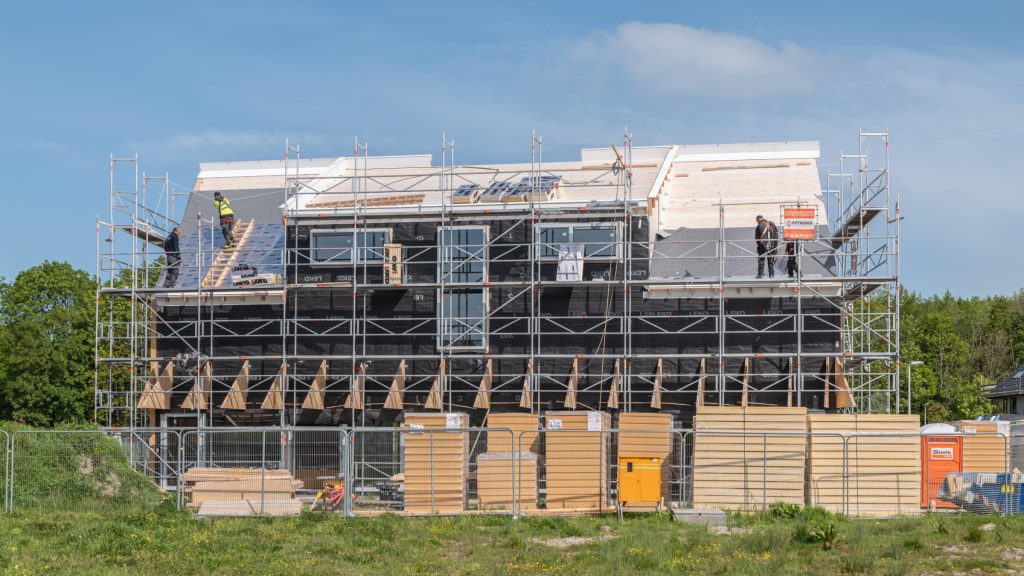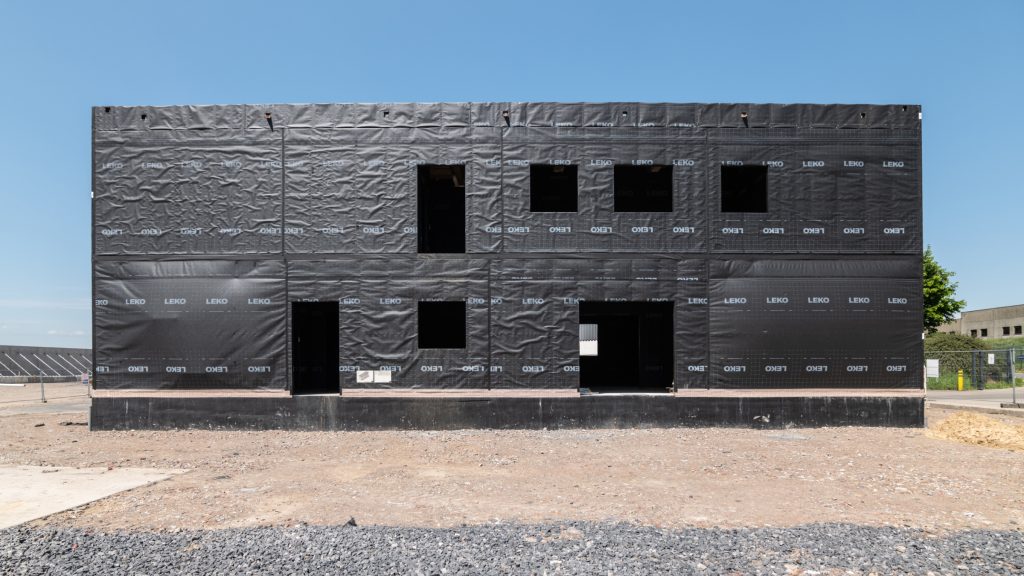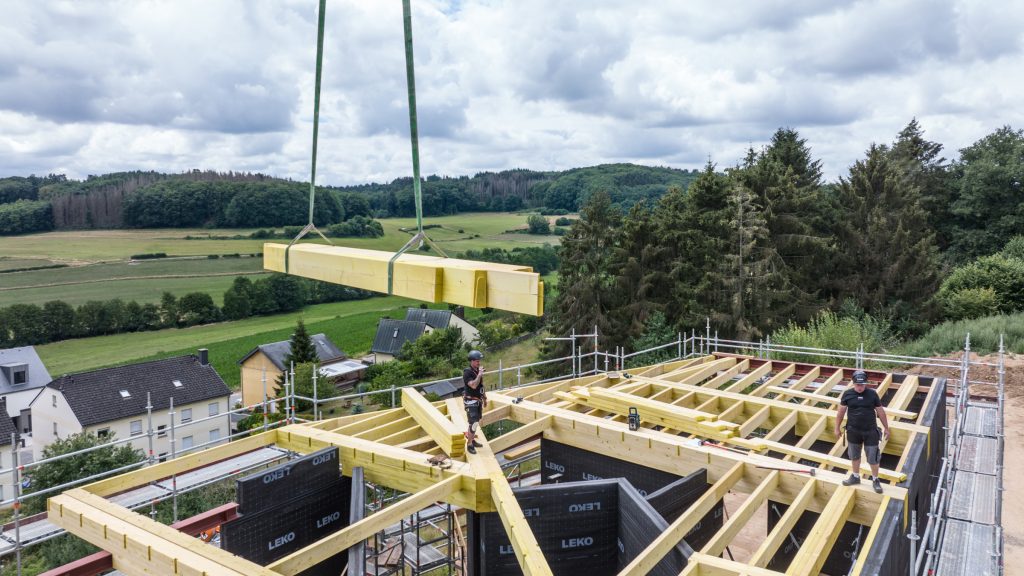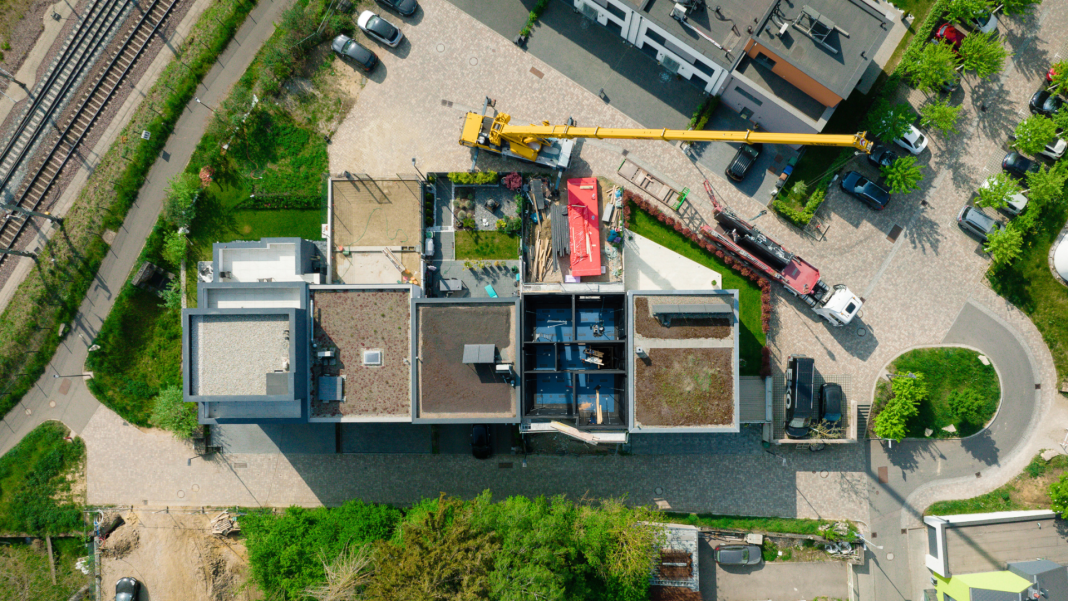Luxembourg’s Leko Labs is revolutionising timber construction with robotics and machine learning—offering a faster, greener, and more cost-effective alternative to traditional concrete methods.
At the heart of Rout Lëns, an ambitious real estate development led by IKO Real Estate in Esch-sur-Alzette, will be one of Luxembourg’s largest timber-structured residential buildings: the D’Haus residence. Designed by architect Tatiana Fabeck, the building will feature 95 flats spanning seven storeys and nearly 9,000 m², with delivery scheduled for early 2027. All walls and floors will be built using cross-laminated timber (CLT) – engineered wood panels made from coniferous trees such as fir, spruce, or Douglas fir, sourced from the Greater Region. This choice is expected to cut the building’s carbon footprint by half compared to a conventional structure. “This isn’t just a flagship project for Luxembourg; it’s a major endeavour on a European scale,” says François Cordier, founder and CEO of Leko Labs, which has been based at Technoport Foetz, a tech-oriented business incubator, since its founding in 2017. “And this entire block will be built using our system.”
“This isn’t just a flagship project for Luxembourg; it’s a major endeavour on a European scale”
2.0 timber construction solution
The company has developed a proprietary 2.0 timber construction solution combining machine learning and robotics. It’s a major milestone for Cordier, whose passion for building dates back to childhood. A qualified engineer in wood sciences and technology, he began his career at a Parisian architecture firm. By the late 2010s, he began to question why timber had failed to gain real traction in the construction sector. “Digging deeper, I realised it was possible to create something far more relevant,” he recalls, “something suited to the needs of the 21st century: constructing low-carbon, well-insulated, high-performance buildings quickly and at affordable prices. Step by step, I understood that we needed to start from scratch with a technological approach.” Cordier drew inspiration from the automotive and aerospace industries, aiming to create structures that are both lightweight and robust. “That’s not the DNA of the construction sector,” he observes. In his view, the industry is being held back by “laziness” – an attachment to outdated materials like concrete and inefficient practices. The result? Wastage of up to 30% in materials on site, and buildings that are unnecessarily oversized.

A sandwich construction
Leko Labs’ solution takes the form of a vertical façade, against which robots construct walls through a layer-by-layer method: gluing and screwing planks together with insulation inserted between them. “It’s a sandwich construction – a composite of bio-sourced wood and insulation,” Cordier explains. Once assembled in the factory, the walls are delivered to the site ready to install. Upstream of the build, the selection of components and material quantities is tailored precisely to each project using proprietary algorithms. “For every project, every wall, every floor, the quantity of material is adapted down to the gram to optimise efficiency,” Cordier says. “To achieve that, you need software – and robots – because only they have the precision and flexibility to produce it all rapidly and accurately.”

60% Carbon Footprint Reduction
The results are striking: around 60% less material waste, up to 80% of concrete eliminated from construction sites, and a 60% reduction in carbon footprint compared to traditional methods – not to mention the associated cost savings. “When you honestly and transparently calculate the total cost of ownership, we’re more competitive and cheaper than concrete,” asserts Cordier. A key reason is reduced labour costs. Workers are needed less on site and more in factories, where automation reduces staffing needs.There are significant time savings too. “In Luxembourg, it usually takes 18 to 24 months to deliver a building,” Cordier notes. “Our fastest delivery so far took just nine months from the first shovel to handover – two to three times quicker.” Leko Labs’ system also allows for slimmer walls – up to 40% thinner – which translates into around 5% more habitable space. “In one recent development of 14 flats, the developer chose Leko because they gained an additional unit for free thanks to the extra surface area,” says Cordier. “That’s huge!”
A Hard-Won Success
To date, Leko Labs has delivered nearly 500 homes, with close to a hundred currently under construction at Rout Lëns, as well as in other major projects – including a large mixed-use development in Howald in collaboration with Beiler François Fritsch architects. Now with a team of fifteen employees, the company could reach profitability by the end of the year. That success has been hard-earned. As Leko Labs marks its eighth anniversary, Cordier is candid: “It’s a lot of work. It wasn’t profitable in the beginning – you have to find funding.” Over the years, the company has raised €25 million in total. A new funding round is expected soon, tied to potential government grants from the Ministry of the Economy – still under discussion. These funds could help accelerate Leko Labs’ next phase, including plans to open a new factory in France.
Looking ahead, Cordier aims to expand into France and Belgium, “to build strong market presence and solid references there, before gradually expanding into other European countries.” But he doesn’t intend to stop at Europe. “We’re having early discussions with the United States right now. Leko’s goal is to go global,” he affirms.

This article was published in the 6th edition of Forbes Luxembourg.
Read more articles:
SolarCleano: Solar Farm Cleaning Robots
Blue Origin Lands In Luxembourg: What Does It Mean For Europe?
Vodafone Bets Big On Sustainable Logistics With €80mLuxembourg Hub

